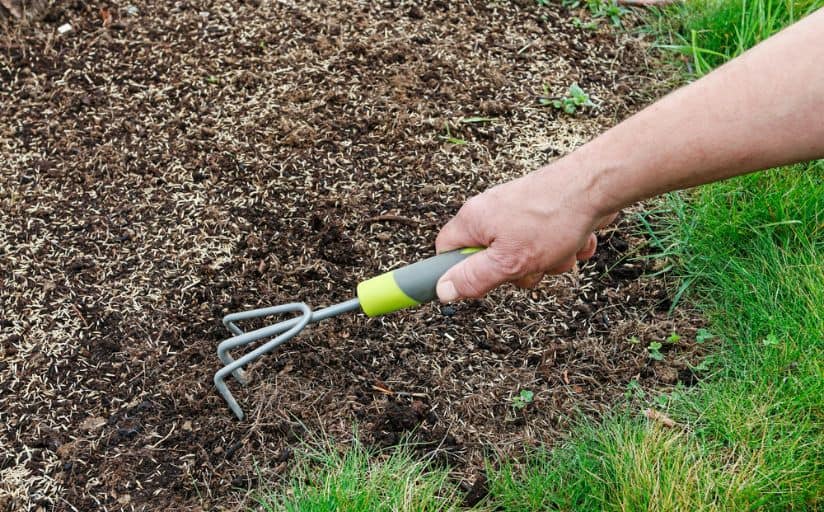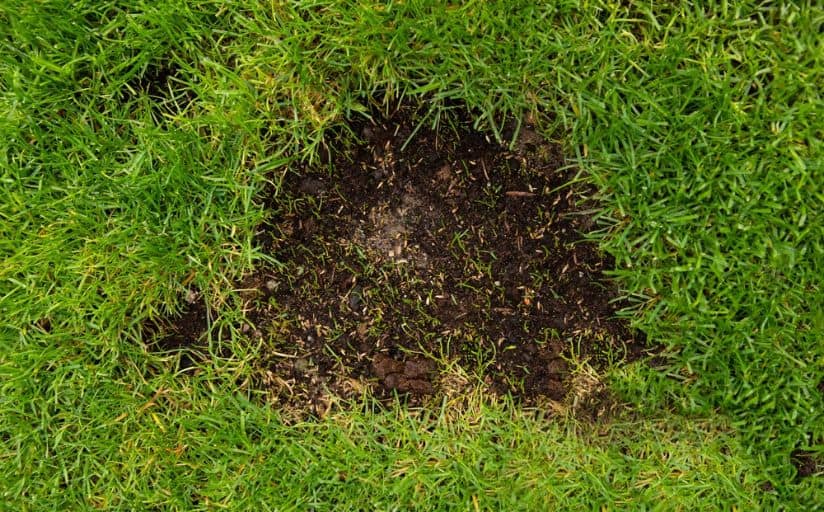Dormant grass seeding is a popular lawn care technique that can help you achieve a lush, green lawn when spring arrives. If you’re looking for a way to fill in bare spots without waiting until the growing season to start overseeding, this alternative seeding technique might be the perfect solution. Let’s explore what dormant seeding is, how it works, and whether it’s right for your yard.
(If you make a purchase using the links in this post, we may earn a commission.)
What Is Dormant Grass Seeding?
Dormant seeding involves planting grass seed during the late fall or early winter, when the soil is too cold for the seeds to germinate but not yet frozen. Instead of sprouting immediately, the seeds remain dormant in the soil throughout the winter and begin growing as soon as conditions become favorable in the spring.
This approach is ideal for areas with cold winters, where the freeze-thaw cycle of the soil helps the seeds settle in and make good contact. It’s a great way to give your lawn a head start in spring, especially if there are spots that need filling in or repair.
Timing is important when it comes to dormant grass seeding. For best results, plant the seeds after the first hard frost, but make sure to complete the process before heavy snowfall covers the ground.
What Are the Benefits of Dormant Seeding?
Dormant grass seeding offers several advantages that make it an appealing option for lawn care enthusiasts:
- Early Growth: Grass seeds germinate as soon as the soil warms in spring, giving your lawn a head start before weeds have a chance to take hold.
- Time-Saving: Completing seeding in the late fall frees up time for other spring lawn care tasks.
- Reduces Soil Erosion: Grass seed planted during the dormant season helps stabilize the soil over winter, minimizing erosion caused by wind, snow, and runoff.
Dormant seeding is a simple yet effective way to jump-start lawn growth in the spring. By timing it right and preparing the soil, you can enjoy a healthier, thicker lawn with minimal effort.

How To Prepare Your Lawn for Dormant Grass Seeding
To ensure your grass seeds take root successfully, it’s important to create a good connection between the seeds and the soil. Here are the steps you should take:
- Mow Low: Mow your existing lawn a bit shorter than usual, cutting it down to about 1.5 to 2 inches.
- Loosen the Soil: Lightly loosen the top quarter-inch of soil.
- Remove Debris: Remove any thatch, dead grass or debris so it doesn’t block the seeds from making contact with the soil.
- Spread the Seeds: Evenly spread your grass seeds at the recommended rate.
- Rake the Seeds: Use a hand rake to gently work the seeds into the loosened soil so they’re well-covered.
- Skip the Water: Natural snowfall and the freeze-thaw cycle will keep the seeds moist and help them settle into the soil. In the spring, regular rainfall should be sufficient to start germination.
- Cover With Snow: For the best results, the newly seeded areas should receive several inches of snow that remain throughout the winter. This consistent coverage helps protect the seeds.
Be aware that winters with fluctuating temperatures—warm periods followed by very cold spells—can actually harm the germination process. When temperatures rise during a warm spell, seeds might start to sprout too early. Then, if it gets cold again, those young seedlings can be damaged or killed. Dormant seeding works best with steady cold temperatures because they keep the seeds dormant until spring, ensuring they have the right environment to grow when the weather finally warms up.
What’s the Best Grass Seed for Dormant Seeding?
The success of dormant grass seeding largely depends on selecting the right type of grass seed for your region and lawn conditions. Cool-season grasses, such as Kentucky bluegrass, fescues, and perennial ryegrass, are ideal because they thrive in the cooler temperatures of early spring.
When choosing seeds, look for blends that match your yard’s specific needs, such as shade tolerance or drought resistance. It’s also a good idea to choose high-quality seeds labeled “weed-free” to avoid introducing unwanted plants into your lawn.
For best results, ensure the area is properly prepared before seeding. Remove debris, loosen the soil, and lightly rake in the seeds to improve contact with the ground
BUY – Pennington Smart Seed Sun and Shade Grass Mix
BUY – Scotts Turf Builder Grass Seed Fall Overseeding Mix

Is Dormant Grass Seeding Worth It?
Dormant grass seeding is a smart solution for homeowners looking to improve their lawns during the off-season. It’s perfect for filling in bare spots or thickening up thin grass, but it doesn’t work as well on already dense lawns. That’s because the seeds need good contact with the soil to sprout and grow when spring arrives. With proper preparation and the right grass seed, your lawn will be ready to thrive when spring arrives.

